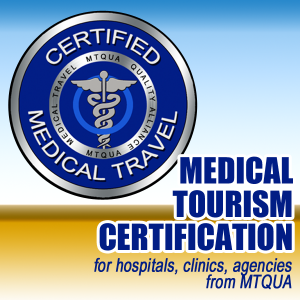 Are medical tourists flocking to India, as everyone claims? There may well be reason to do so, in some cases.
Are medical tourists flocking to India, as everyone claims? There may well be reason to do so, in some cases.
If there’s a new medical procedure, a doctor somewhere in India is likely to be doing it – and not just testing it out, but doing several procedures a day or a week.
Beating heart surgery is one such procedure pioneered in India and now used around the world. Requiring no general anesthesia or blood thinners, and causing little pain, patients recover more quickly than from more common surgeries.
Hip replacement surgery likewise put India on the map by popularizing the Birmingham hip resurfacing procedure, a less invasive alternative to total hip replacement.
Multiple sclerosis patients are flying to India for an experimental – and controversial – procedure that some claim cures this degenerative disease.
Government and private sector studies in India estimate that medical tourism could bring between $1 billion and $2 billion US into the country by 2012. The reports estimate that medical tourism to India is growing by 30 per cent a year.
Why travel to India for medical tourism
- Language is a major comfort factor that invites so many foreign tourists to visit India. India has a large populace of good English-speaking doctors, nurse, and medical staff.
- Indian hospitals and nursing homes excel in cardiology and cardiothoracic surgery, joint replacement, dental care, orthopedic surgery & etc.
- Indian corporate hospitals have no waiting times for surgeries. Most elective procedures can be performed within 8-10 days of the first contact with an Indian hospital.
- Corporate hospitals use the latest technology available and perform more complex procedures and treatments. Most advanced medical equipment is imported from countries like USA, UK, Germany, Japan etc.
- Most hospitals in India have fully integrated health information-technology (HIT) systems, including electronic health records (EHRs). This helps cut medical errors and increase efficiency, and makes it very easy for medical tourists exchange medical information with doctors.
- India has several JCI-accredited hospitals and many more are accredited by its National Accreditation Board for Hospitals and Healthcare Providers (NABH) is only a few years old. Its procedures and systems are not as tested by time as the older accreditation bodies in Australia and Canada, whose accreditation boards have been actively involved in hospital standards and accreditation since the 1950s.
Medical tourists must be very careful in selecting a doctor, a hospital, and a medical tourism company in which to entrust their medical planning and treatment. For example, if having the very latest imaging equipment is critical to one’s procedure, be absolutely sure your hospital provides it.
Health care system in India
Until the 1980s government-run hospitals were the main providers of health care in India. However, over the last decade the Indian medical system has undergone a sea change with increasingly strong participation by the corporate and the private sector.
These days private and corporate hospitals, nursing homes and clinics play a major role in administration of Indian health care. Some of these private hospitals and clinics are highly advanced and provide world-class medical services. As part of the social and economic needs of the country, corporate hospitals are also obliged to care for patients who are economically disadvantaged.
As India continues to liberalize its health care industry, encouraging public-private partnerships, and otherwise easing restrictions on foreign investment, innovation and adaptation are fueling new business models in health care delivery. We can expect to see a coming of age for health care in India more quickly than expected.
India’s private health care system
India’s private health care system is booming and is expected to be worth billions of dollars in the decades to come. This growth comes on the back of a large (200 million plus) middle class with very high expectations. An increasing number of people from overseas see India as a potential destination where they can combine high quality affordable health care along with the possibility of seeing and experiencing one of the world’s oldest living cultures.
India is moving into a new area of “medical outsourcing,” where subcontractors provide services to the overburdened medical care systems in western countries.
India’s National Health Policy recently declared that treatment of foreign patients is legally an “export” and deemed “eligible for all fiscal incentives extended to export earnings.”
Education and training of doctors in India
India’s top-rated education system is not only producing computer programmers and engineers, but an estimated 20,000 to 30,000 doctors and nurses each year.
The Indian medical education system is organized and strict, which ensures that the doctors, nurses and medical staff are suitably qualified and have proper potential and experience to deliver best quality medical, treatment.
The Indian medical education system is different from that in the USA and many other countries in the fact that there are no premedical subjects taught in the first year of medical university. Instead medical students are introduced to the basic medical subjects.
This is made possible by India’s Higher Secondary School System, which covers all those pre-medical subjects and the students need to qualify for the Higher Secondary Exam before they can even appear for the qualifying entrance examination for medical colleges. The Higher Secondary School Syllabus in India is considered to be one of the toughest and most advanced in the world.
Most doctors in India often go for further education in terms of post graduation and other specialized medical courses that will increase their expertise and knowledge. Most of the doctors who work at affiliate hospitals have various levels of experience in hospitals abroad. A large number of doctors have done their specialized internships in the US, UK, Australia, Germany etc.
Doctors employed at the private hospitals are highly educated with years of experience, including specialists for every department of medical care. Most of the doctors have had a good exposure working in the west and understand patient needs.



